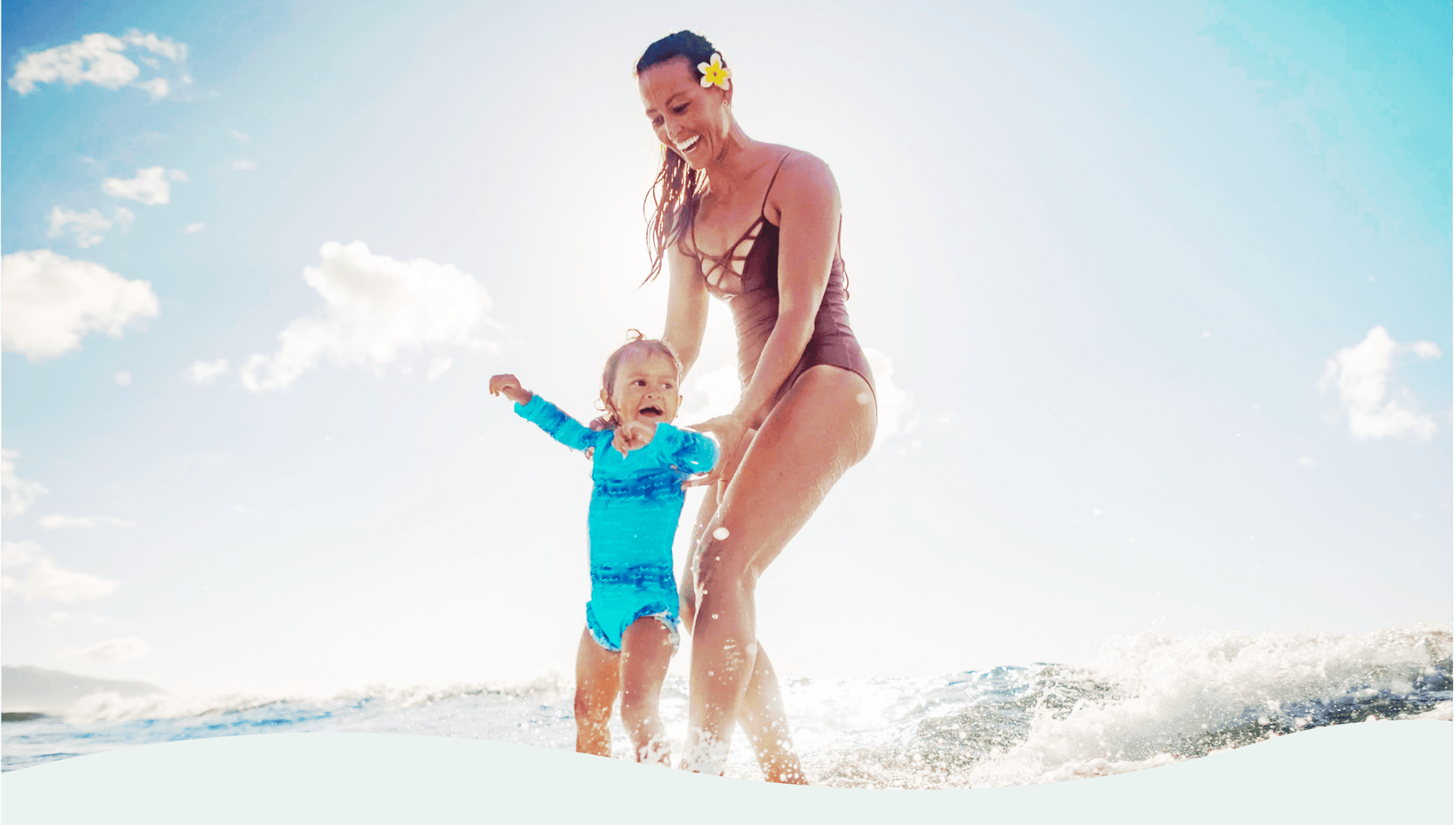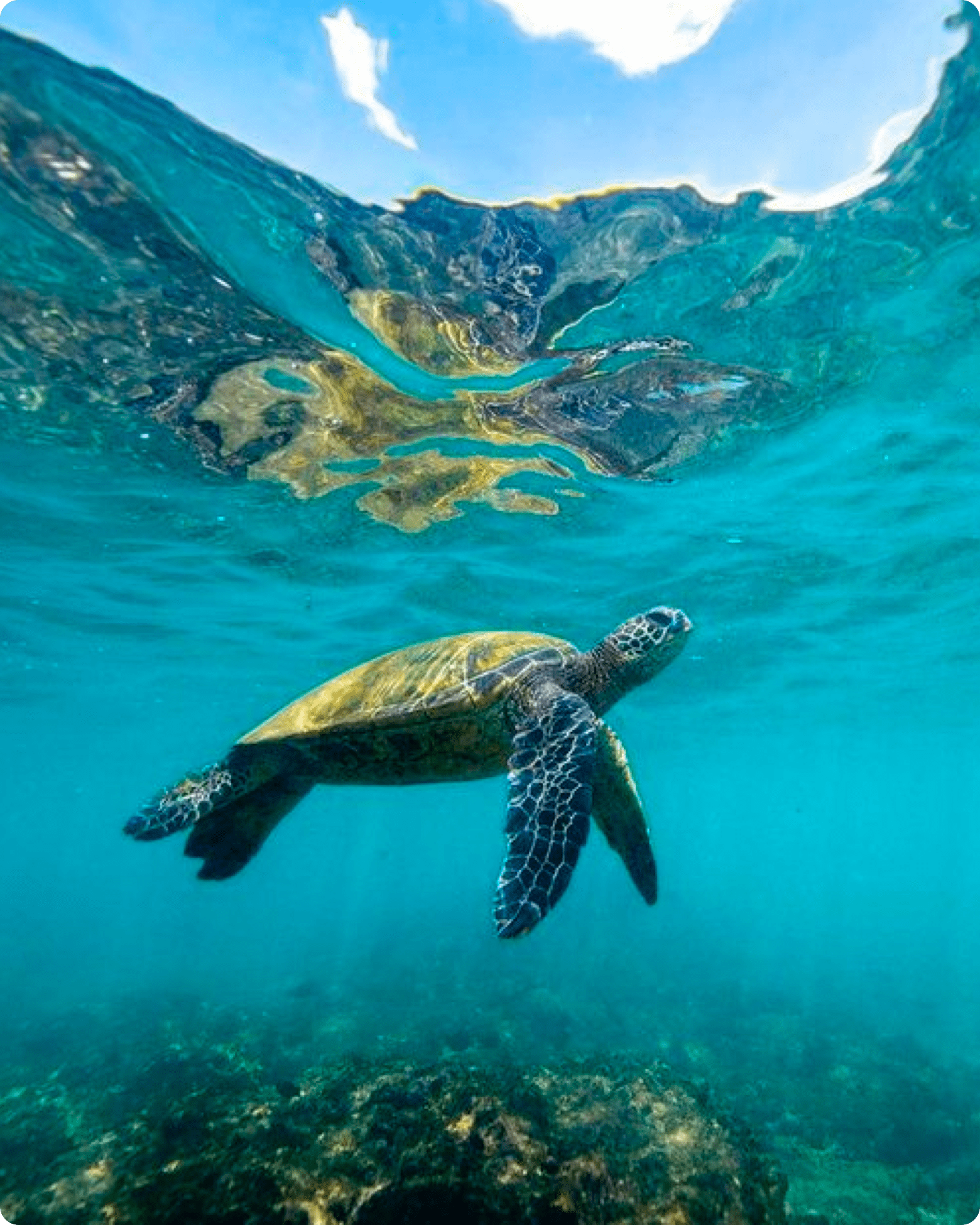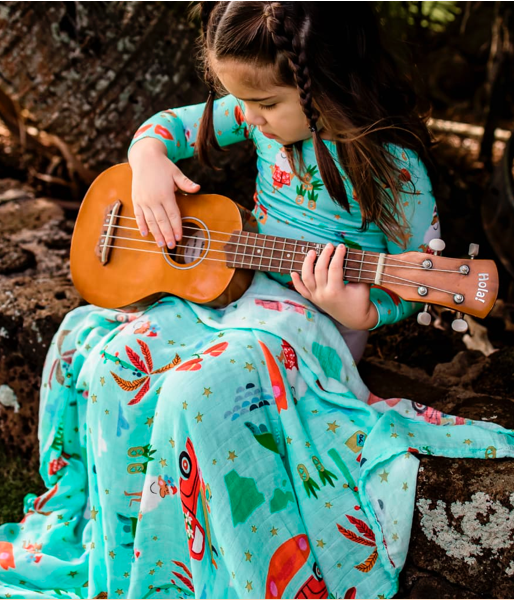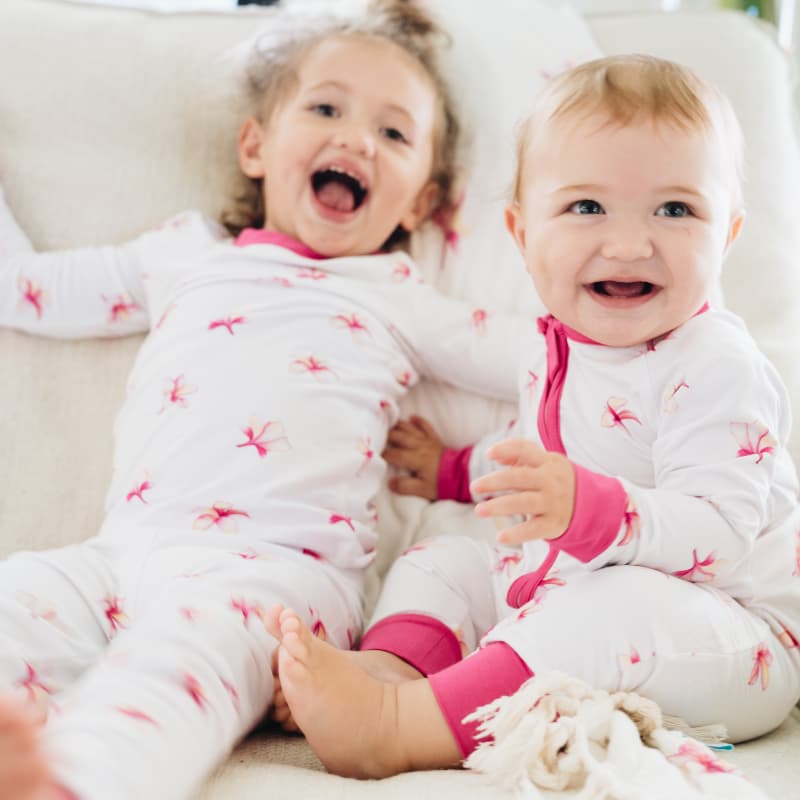How many of you have heard the words “cloth diapering” and immediately thought “I could never do that!”? I’m raising my hand because I’ve always had that same thought myself. But after speaking with Pōhai Nu'uhiwa Campbell of Kaleimamo Hawaiʻi, I’ve realized that it’s actually easier (and way cuter!) than many of us may think.
We’re so excited to have had the privilege to interview Pōhai and to learn more about her sustainable, Hawaii-inspired cloth diaper business. Keep reading to learn more about Kaleimamo Hawaiʻi and why cloth diapering is not nearly as daunting as it may seem!
Can you start by telling us the story behind Kaleimamao Hawaiʻi!
My name is Pōhai Nu'uhiwa Campbell, and I am the māmā behind Kaleimamo Hawaiʻi! Our inspiration for Kaleimamo Hawaiʻi started with our daughter, who is also named Kaleimamo! When we found out we were pregnant, we did the thing that all first-time parents do: research. We began to learn about how wasteful disposable diapers are, and my husband suggested that we look into cloth diapers. I was VERY hesitant at first, but the more I did research, the more I became open to the idea! When our daughter arrived, we realized how easy, fun and CUTE cloth diapering can be, and we fell in love! However, I always kept wishing that there was a local cloth option that truly represented our Native Hawaiian culture. In addition, I found that it was difficult to find other local mamas in our community who also used cloth. So, we set out to design cloth diapers inspired by our indigenous language and culture and also to build Hawaii's cloth community. The cloth community is so supportive, and we wanted to encourage others to consider cloth and build awareness of this eco-friendly option. Our mission is to help raise our children more sustainably, perpetuate our culture, and serve as a resource for our community and beyond.

How did you first get started with cloth diapering? Is it something you knew you wanted to do or was it something you kind of discovered?
My husband was actually the one to suggest cloth diapering! He is very much an ocean person and eco-friendly living is always on his mind. I was hesitant at first, but once I gave it a try, I fell in love. Disposable diapers are a relatively new option for diapering keiki; they were invented in the 1950s. That means just a few generations ago, ALL families were using cloth diapers! Today, modern cloth diapers are very different from your grandmother's cloth diapers! There are no safety pins or "plastic pants," and cloth is highly functional, easy to use and wash, and is also undeniably cute!
What was your biggest hesitation and or challenge with cloth diapering and how did you overcome it?
My biggest hesitation about cloth was that it would be way too much work! My husband and I both work full time, and I thought it would be impossible. I even told myself that if cloth ended up being too hard, it was totally okay if we stopped. Like anything new, a good system that sets you up for success is key! Once we had a good routine in place, it only took a few extra minutes out of our day to start the washer and dryer (or hang dry), and only 2 to 3 additional laundry loads a week. We were super surprised at how simple it could be, and wanted to share what we learned with others.

Why cloth diapering over disposable diapers?
There are many reasons why we chose cloth over disposables, and each 'ohana's reason to use cloth may be different, which is great! A few of my favorite reasons to use cloth include:
For Our 'Āina - Approximately 20 BILLION disposable diapers end up in landfills every year. On top of that, it takes each diaper about 500 years to decompose! Unsurprisingly, disposable diapers are the THIRD largest single consumer item in landfills. In addition, a significant amount of resources are used to manufacture disposable diapers, which creates even more waste. In short, we are creating a TON of waste that will be around for many generations to come. Choosing to cloth diaper, even part time, can have a huge positive impact on the health of our ʻāina.
For Our Babies - Disposable diapers contain various chemicals such as Tributyltin, Sodium Polyacrylate, Volatile Organic Compounds, and Dioxin. These chemicals can irritate baby's delicate skin, and can lead to diaper rash. Our diapers do not contain any harmful metals or chemicals, and have passed testing at a CPSC-accepted testing lab. Our products also feature athletic wicking jersey material, which helps to wick moisture away from baby and keep baby cool and comfortable.
For Our Wallet - Disposable diapers are expensive! One baby alone will use a staggering 8,000(!) disposable diapers from birth to potty, which adds up to $2,500 (or more!). In contrast, cloth diapers and reusable wipes can cost significantly less, around $300 to $500. You can save even more by buying second-hand cloth diapers, using cloth on multiple babies, and also selling your diapers when babies outgrow them. Even with a slight increase in your energy and detergent costs, your ʻohana can save significant funds using cloth diapers.
More Effective Than Disposables - Cloth diapers simply are more effective than disposables. They contain blowouts better and minimize diaper rash. We've NEVER experienced a blowout while using cloth. Our baby also never had a diaper rash while using cloth diapers (unfortunately, baby did experience diaper rash from the rare times we had to use a disposable diaper). When we used cloth diapers, we had peace of mind knowing that our baby was comfortable and that we were well-protected from any unexpected surprises!
Easy to Use - Using cloth diapers is easier than you think or expect! Modern cloth diapers have come a long way; there's no safety pins or plastic pants anymore! Nowadays, cloth diapers are just as convenient and easy-to-use as disposable diapers, but WAY cuter and more stylish! By using cloth, we've never experienced the dreaded "late-night diaper run," and never had to empty a smelly diaper pail into an already full trash bin. If you also choose to practice elimination communication with your baby, cloth diapers are wonderfully helpful. With as few as two more loads of laundry a week, cloth diapering is totally doable.
Kū I Ke Kaila (Super Stylish!) - One of the reasons I fell in love with cloth diapering is because they're so CUTE! There are so many beautiful cloth diapers available, and they make diapering your baby quite enjoyable. You can easily tailor your cloth diaper stash to fit your unique style and budget, and also the needs of your family. In a nutshell, cloth is FUN (beware: cloth diapering can be addicting!). :)
Community Oriented - Learning about cloth diapers can be overwhelming, but there is a community of cloth diapering families who can offer support and want you to succeed. You are not alone! If you ever have any questions, feel overwhelmed, or just want to share a photo of your cute cloth-diapered baby, we are here! There are also many wonderful online cloth diaper communities, and they can be a wonderful support system whenever you need it.

What’s your wash and care process with cloth diapering?
The wash/care process for cloth can be different for everyone, but there are a few basic principles that are good practice! We always encourage families to do what works for them. Once you get into a good routine, the care process can be very simple.
In general, cloth diapers should be washed every 2 to 3 days. If there is a poop diaper, rinse or spray the diaper as soon as you are able (no solids should go into the wash). Cloth laundry can be simplified into three steps:
(1) Pre-Wash: A warm wash cycle on the shortest setting, with minimal or no detergent.
(2) Main Wash: A hot wash on the heaviest/longest cycle, with detergent, and an extra rinse.
(3) Dry: Tumble dry on low or hang dry.
What is the difference between diaper liners and diaper inserts (and their purpose)?
Diaper liners are not absorbent, but they help to make clean up of any poop diapers easier; you can just spray or rinse the poop off the liner and toss it in the wash with your regular cloth laundry. There are also disposable liner options available as well. Diaper inserts, on the other hand, are made of absorbent materials (ours are made of bamboo and cotton), which absorb any urine that baby produces.
Can you share some advice for someone who wants to make the switch/begin with using cloth diapers?
Go for it! Start with a few diapers and give it a go! We are often hesitant to do things we are unfamiliar with, so if you're not ready to make the full leap right away, try cloth part time to see how it will work for you and your family. Itʻs probably more doable than you initially think! Also, if you are curious and have questions, ask away! Cloth families are happy to share about their journeys in a non-judgmental way.
If someone wanted to get started, how many cloth diapers, inserts, liners, etc. would you recommend they start with? Is there an ideal “starting set”?
I recommend starting with enough diapers/inserts for 3 to 5 diaper changes. You may want to try various diaper styles, for example pockets and all-in-ones, so you can see which you like. You can always keep building your diaper collection from there! You may also find that different diapers work better for your baby at different stages. Or, you can start with a "full stash" of around 25 to 30 diapers, which is around the amount you'll need to cloth diaper full time (washing every 2 to 3 days). I did this because I was a bit crazy, and let's be honest, the prints are so cute! Having cloth options around and ready to go make it much easier to get started.

How do you think we can change the stigma that it’s “a lot more work” around cloth diapering?
I think that sharing knowledge about cloth and how simple it can be can help debunk this myth. Knowing someone in real life who uses cloth and can serve as a support system can also make a huge difference! Seeing cloth diapers in the wild always excites me because I know it's naturally building more awareness of cloth in our communities. Using reusable products, like reusable water bottles, can be very simple, and I think that as more people use cloth and it becomes more mainstream, it will help to show that it's not as much work as one might think!
What was the process like when you were getting your diapers juuuust right when you first began creating Kaleimamo?
It was a LOT of work and so many samples to get our products just right for all of you! It was challenging to develop a product that was beautiful, but also completely functional as well! We spent lots of time researching, brainstorming, and going back to the drawing board to make something we loved. It took almost two years to launch our shop, and we are constantly striving to improve our products, business and designs to provide effective, eco-friendly, and culturally appropriate products for our community!
How do you get the inspiration for your prints?
All of our prints are inspired by our Native Hawaiian culture and language, and each print is intentional and meaningful. I am inspired by our mele, oli, hula, and natural elements in Hawaiʻi. I am hopeful that our reach will spread beyond Hawaiʻi to help others gain a bit more understanding of what truly is Hawaiian, and not just what is portrayed by mainstream media and tourism. We have such a rich indigenous history and tradition, and I am lucky and grateful to be a recipient of this 'ike (knowledge). I am so excited that others find value in this 'ike as well. I also am inspired by our customers too, and love to hear their suggestions and feedback!
What’s your favorite diaper print and why?
Picking a favorite print is like picking a favorite child! It's so hard! Lehua Mamo is very special to me because it was the first print I dreamed up and it was inspired by our daughter, Kaleimamo. :)

What’s on the horizon for Kaleimamo?
We have a lot planned for 2022, which will be our first full year of business (we launched in October 2021)! We will be releasing more new, exclusive prints and hopefully more eco-friendly products! We also hope to collaborate with other native and locally owned shops that we love!
If you’d like to learn more about cloth diapering and check out Kaleimamo Hawaiʻi’s products, you can visit their online store here: www.kaleimamo.com or check out their Youtube Channel: https://www.youtube.com/c/PohaiNuuhiwa
And don’t forget to follow them on Instagram, Facebook, and TikTok at @kaleimamohawaii. And if you’re still curious or want to hear from Pōhai herself and other cloth families, be sure to visit their Facebook group: Kaleimamo Hawaiʻi 'Ohana!









